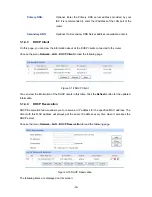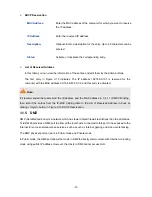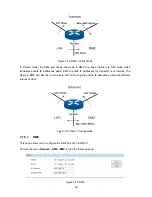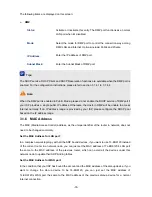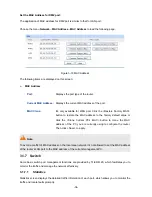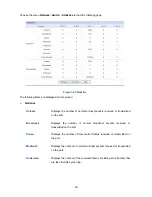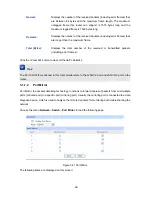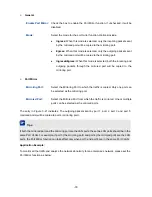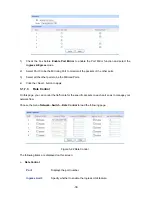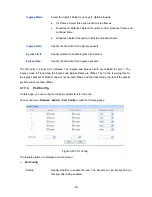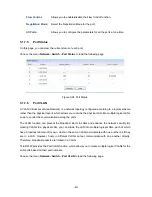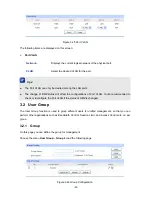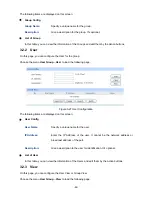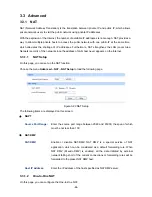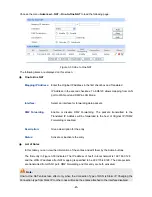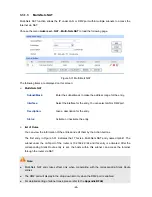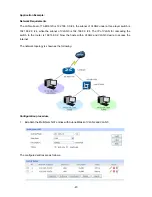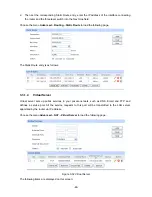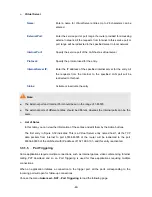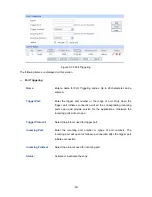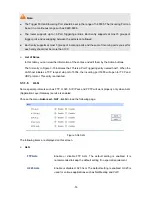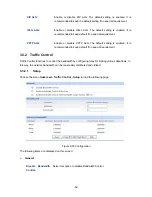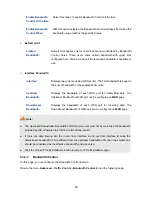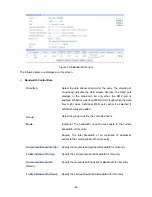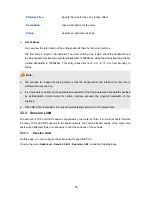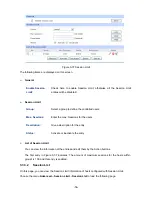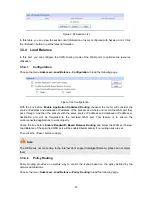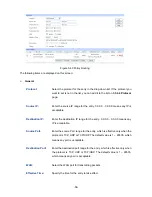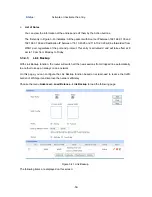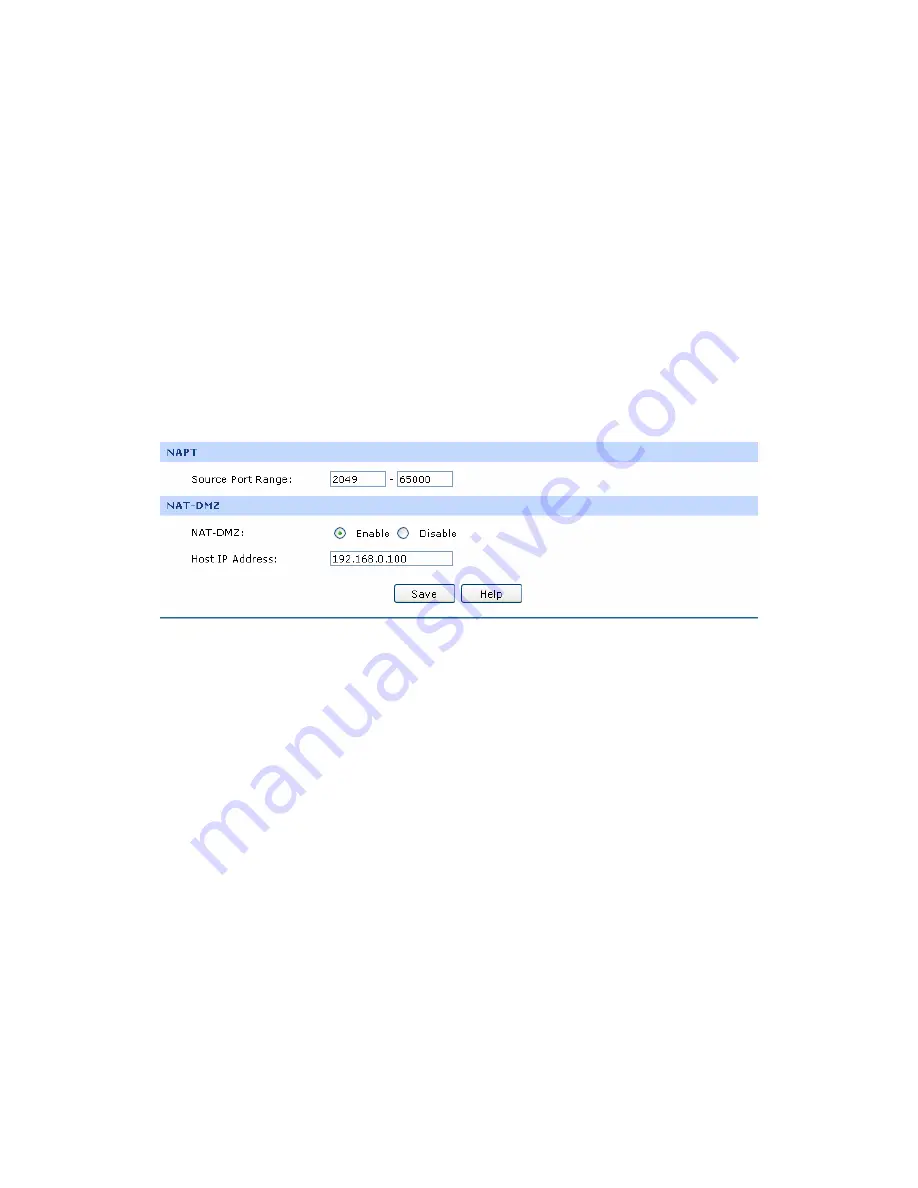
-44-
3.3.1 NAT
NAT (Network Address Translation) is the translation between private IP and public IP, which allows
private network users to visit the public network using private IP addresses.
With the explosion of the Internet, the number of available IP addresses is not enough. NAT provides a
way to allow multiple private hosts to access the public network with one public IP at the same time,
which alleviates the shortage of IP addresses. Furthermore, NAT strengthens the LAN (Local Area
Network) security of the network since the address of LAN host never appears on the Internet.
3.3.1.1
NAT Setup
On this page, you can set up the NAT function.
Choose the menu
Advanced
→
NAT
→
age.
3.3 Advanced
NAT Setup
to load the following p
Figure 3-29 NAT Setup
The
ispl
NAPT
Source Port Range:
Enter the source port range between 2049 and 65000, the span of which
Enable or disable NAT-DMZ. NAT DMZ is a special service of NAT
application, which can be considered as a default forwarding rule. When
xternal
e
Host IP Address:
Enter the IP address of the host specified as NAT DMZ server.
following items are d
ayed on this screen:
must be not less than 100.
NAT-DMZ
NAT-DMZ:
NAT DMZ (Pseudo DMZ) is enabled, all the data initiated by e
network falling short of the current connections or forwarding rules will b
forwarded to the preset NAT DMZ host.
3.3.1.2
One-to-One NAT
On this page, you can configure the One-to-One NAT.

